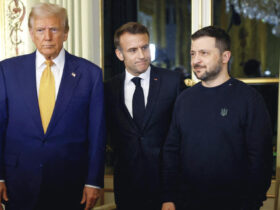[In1945in1945intheformoftheworldintheareaoftheworld[1945मेंद्वितीयविश्वयुद्धकेअंतकेबादएकपराजितजर्मनीकोचारव्यवसायक्षेत्रोंमेंविभाजितकियागयाथाजोमित्रदेशोंकीशक्तियोंद्वारानियंत्रितकियागयाथा:संयुक्तराज्यअमेरिकाफ्रांसग्रेटब्रिटेनऔरसोवियतसंघ।
In 1949, two states emerged: Germany’s Democratic Federal Republic (FRG) in the West, and east socialist German Democratic Republic (GDR), later under Soviet control. From that point, Germany was divided.
Citizens of East Germany were allowed to travel to the west only under strict circumstances. The boundaries of the GDR were heavily preserved, and a huge wall was built around the West Berlin, belonging to the FRG to prevent GDR citizens from leaving their country.
How did the renovation of Germany come?
In GDR, people lived in a monitoring state, deprived of freedom of expression. Those who failed to follow the line of socialist rule faced harassment and imprisonment.
By the end of the 1980s, the population against the government was growing rapidly. Citizens were enjoyed for the freedom and democracy of their neighbors in the Federal Republic of Germany.
Meanwhile, in the Soviet Union, Mikhail Gorbachev’s policies were providing encouragement. Unlike his predecessors, Gorbachev refrained from using military force to suppress protest movements in GDR and other eastern block countries.
In 1989, a wave of peaceful demonstrations was swept away in East German cities, which was eventually leading to the collapse of the Berlin wall. This cleared the way for reunion of East and West Germany.
3 October Why is German unity day?
The opening of the Berlin wall on November 9, 1989, what is the twist for the route towards reunion.
Celebrating German unity that day may seem like a clear choice.
But this particular date is more in the tragedy than almost any other in German history. On the night of 9 November – 10, 1938, the Nazis burnt the Lord, destroyed Jewish businesses and houses, and killed Jewish people and arrested them. “Reichspogromnacht” – known as November Pogroms and was first referred to as “Crystalnach” – marked the onset of systematic harassment and mass murder of Jews.
Because of that, the renovation of the reunion was out of questions after reminding them of that night. On October 3, it was selected for the new national holiday instead. On this day in 1990, the reunion was formally completed, as it was the date that GDR officially merged with the Federal Republic of Germany.
How do German people celebrate unity day?
The answer is: quite quite quiet. Those who expect fireworks and the roads out of national colors may be disappointed. However, almost every city hosts events, open houses and small ceremonies.
In addition, every year on 3 October, one of the federal states conducts a large, official festival – distinguished in its state capital. Whatever the state is currently the responsibility of hosting the Bundesrat – the President of the Upper House of the Parliament of Germany.
2025 points in Sarland. In the capital, Sarabruken, the official program runs from October 2 to October 4 and promises “Entertainment, Arts and Culture, with Pakistani Specifications and Tourism -Democratic Exchange”.
Most of the Germans, however, are happy to enjoy just one day.
Why is there no monument for reunion?
In fact, one should have been a long ago. Following a debate of nearly 10 years, on 9 November 2007, Germany’s Parliament – Bundestag – decided to create “memorial for freedom and unity”.
This was the idea instead of 50 meters-lamb, moving structure in front of the Humboldt Forum in the center of Berlin. It was to be an interactive metaphor for democracy: when people stepped on it, the stage would include in the direction in which the majority went away.
By 2025, the monument has yet to be physically physically physically. Disputes between commission companies have delayed construction to give IT and responsible government institutions. What and when a solution will be found will remain uncertain. Pedestal for this is at least, already in place.
Is today’s Germany really united?
Despite political efforts, a recent survey by the German Marketing Institute Forsa indicates that Germany has not yet completely removed its partition.
Currently, only 35% of the reactions say that East and West have “developed a large extent simultaneously.” Separate perceptions of reactions confirm the division: in the east, only 23% believe that the garsmen have become a people since 1990, compared to 37% in the West.
In 2019, the spirit of arriving at its highest point, when 51% agreed that the two had originally united. When the Infratest DIMAP was asked by the Political Research Institute that what was still missing for the successful reunion, the most frequent reaction so far – 50% – at 50% – wages, pension and money is equal.
This article was original in German.






Leave a Reply